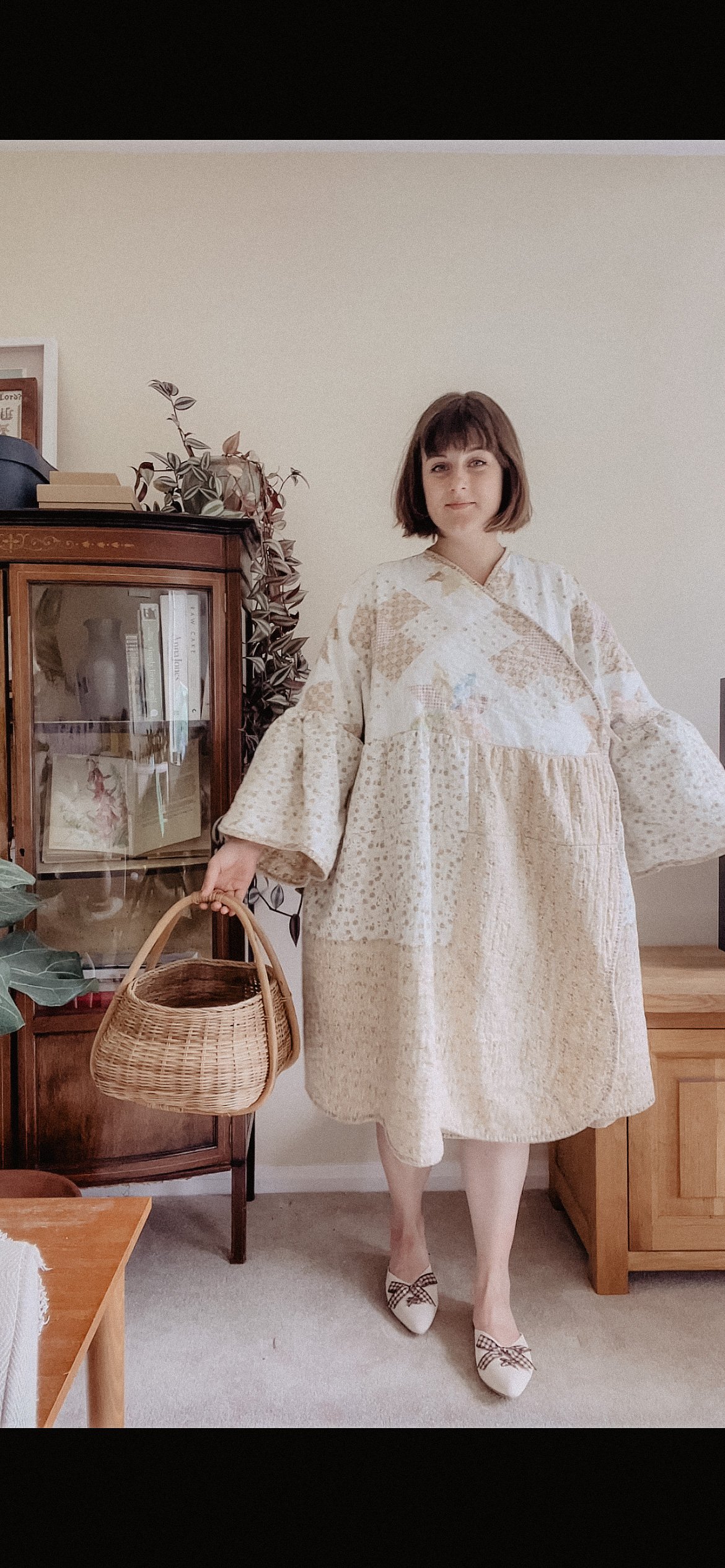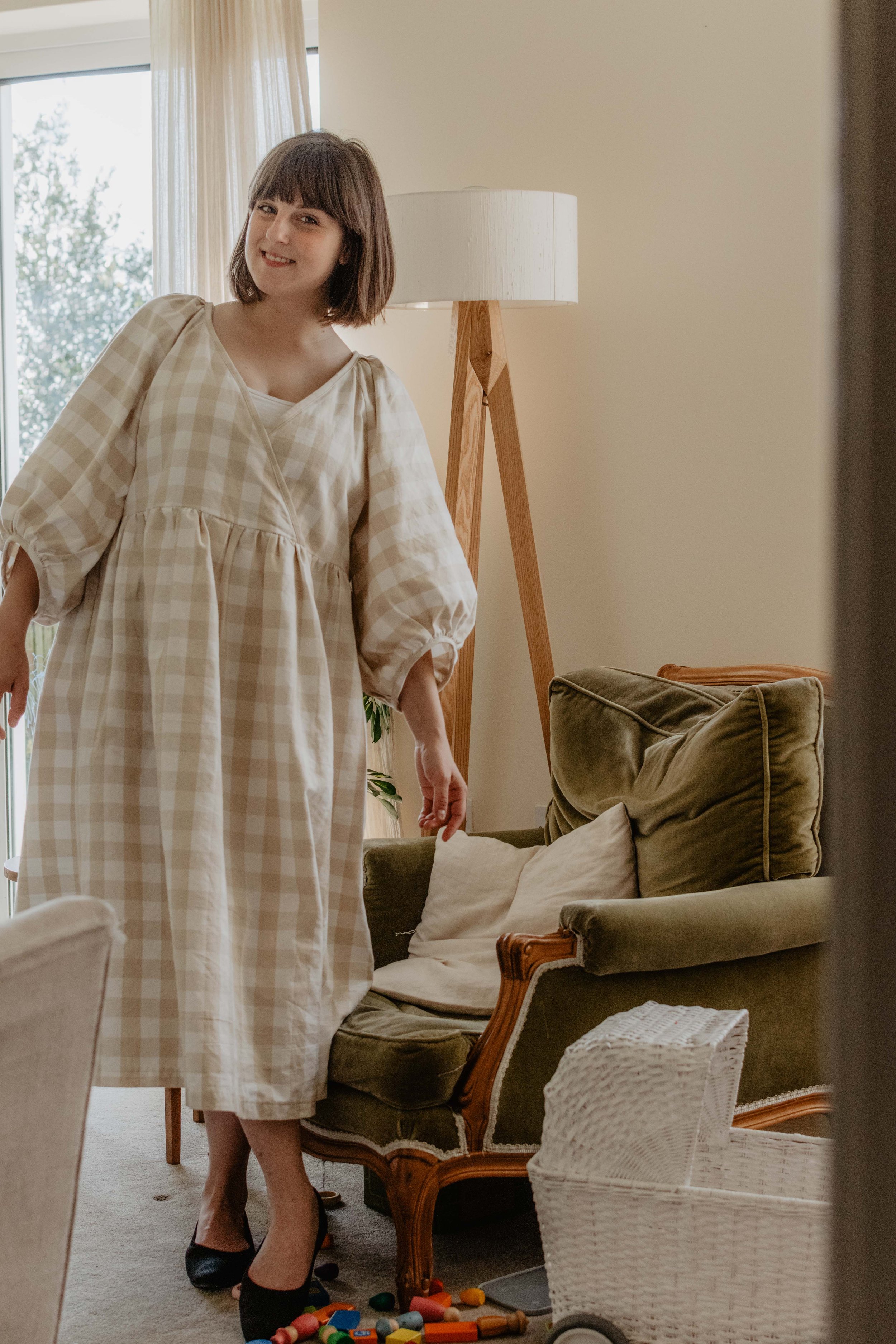Inside LINA WIL : a sustainable jewellry and homeware brand
Progress towards sustainability can often feel frustratingly slow among big business. While there are glimmers of change, the march of fast fashion and overconsumption of resources seems relentless. But there is a grassroots movement of small makers who are creating beautiful pieces with innovative sustainable practices. Lina is one such designer, with an eye for beauty that is matched by a passion for integrating ethical and sustainable principles into every stage of her creations.
I asked her to share a little about her brand, LINA WIL, the jewellry industry, and how we as consumers can take steps towards supporting sustainable brands.
hi lina! Tell us a little about yourself. What do you do? And how did you arrive where you are today?
My name is Lina and I am a product designer running my own brand, LINA WIL, from my studio in the West End of Glasgow. I grew up in Germany but spent a large chunk of my adult life in Stockholm, where I moved at the age of 19 to study design. I started with a foundation year at an art and design college on Lidingö, an island just outside Stockholm city, where I studied jewellery and metal working.
My time at Nyckelviksskolan very much laid the foundations for my interest in making before I went off to study Industrial Design at Stockholm’s renowned Konstfack University. During an exchange term at the Glasgow School of Art, where I also ended up doing my masters in Design Innovation, I fell in love with Scotland and permanently moved here a couple of years ago. I love how tightly knit the creative community in Scotland is and was welcomed with open arms from the beginning. I enjoy how real Glasgow feels - it is an incredibly vibrant and diverse city.
Besides running my jewellery and homeware design business, LINA WIL, I now work at the Glasgow School of Art and love taking trips to the Scottish Highlands and the seaside. Nature is absolutely incredible up north and lockdown has made me appreciate the beauty of where I live even more.
How did you come to start Lina Wil?
I think there is never one single answer to this question, but I definitely had a couple of main drivers when it came to starting my own business. I started working on the first few pieces of what would later become LINA WIL at a time where I needed some more mindfulness in my life, something that physical making had always provided for me. It enabled me to reconnect with myself, as well as the foundations of my design education, that I felt I had lost sight of during my masters degree that was more innovation-focussed and dealt with service and conceptual, rather than applied design.
Working with a variety of clients over the years, I had also grown somewhat frustrated with how the word sustainability was often used but hardly ever followed through with. Ultimately, when it comes to working with environmental questions, I believe that people only take care of what they love, and working with objects for the self and home felt like a great start for this, as well as a way of re-discovering my aesthetic sensibility and voice.
Starting LINA WIL was a way for me to manifest my own values in physical products, while also creating a realm where I could be completely self-directed in the aesthetics I wanted to put out in the world. I perceive my designs to be highly influenced by the different cultural contexts I’ve lived in and I always try to unite the best of each in every object I design: pure, effortless shapes inspired by my time in Sweden, no-hassle wearability and usability - a bit of German no-nonsense attitude - and a tad of flamboyance and playfulness that I picked up in Glasgow.
What is the ethos of Lina Wil? How do you incorporate ethical and sustainable principles?
At LINA WIL, I aim to design and make jewellery and homeware that is a joy to own and that holds itself up to high standards of ethical practice from start to finish. This includes the materials I use, treatment methods, packaging and the companies that I choose to work with. Since my work is aesthetics, my goal for each piece is to make it feel both contemporary and timeless enough for people to love their pieces for a long time - and ideally, pass them on at some point. Something that can be used and loved for years or decades to come.
Sustainable thinking very much starts at the prototyping phase for me, and since developing new products often goes through some iterations, I start with using biodegradable materials for my sketches and prototypes, such as cornstarch PLA filament for my 3D-printer. I try to source materials from the UK wherever possible and have invested into an energy-efficient eco-kiln for my ceramics that I power with renewable energy, as I do for the whole studio.
In terms of packaging, I only use paper and cardboard, as well as one or the other pressed flower. I am also very pleased that I managed to find a supplier for Fairtrade cotton jewellery pouches from the beginning. My customers love showing off their packaging on Instagram and I’ve received a lot of questions from other designers and makers about it - which I am always happy to answer. I believe that sustainability is very much a collective effort. If other people want to improve their sustainable practices and I can help out with this, I am glad to help!
How do sustainability principles translate specifically into your jewellry making?
For my jewellery, I work exclusively in reclaimed precious metals and use alternative, environmentally friendly treatment methods wherever possible. For example, to remove oxides and flux after soldering, I use a food-grade plant-based pickling solution instead of harsh acids. This method takes longer and is a lot more expensive, but doesn’t cause any issues for the environment at the end of the substance’s lifetime.
I’ve always loved pearls but finding a supplier for sustainably farmed pearls after I wasn’t able to work with reclaimed pearls anymore took months of research. I now work together with a small company that sources sustainably cultured pearls from pearl farms close to Shanghai. They have built long-lasting relationships with the pearl farmers and the income from the trade helps improve people’s standard of life every year. It is great to know exactly where the pearls come from and sometimes I get sent an image from the farm, too.
What do you see as the main issues in the jewellery industry? What do you think needs to change?
There are already many small brands that are incorporating principles of sustainability through the metals they source and the way they produce. What I would love to see, is that issues within precious metal and gemstone supply chains are openly addressed and worked on by bigger companies who really have the power to impact the overall environmental and human impact of the industry.
A great start for this would be that the use of recycled metals becomes the norm. The beauty of solid precious metals is, after all, that they are endlessly recyclable - and we already have a lot of them. The extraction of precious metals and gemstones comes at a huge environmental cost, and human exploitation and slavery are still a way too common reality.
Even though there are many good initiatives focussing on Fairtrade gold or fairly traded gemstones mined by small communities, I think it is always valuable to appreciate the resources we already have.
I think that there will always be a stream of fashion and investment or heirloom jewellery within the industry. I feel that I sometimes sit at the intersections of these. If the fashion jewellery industry, and especially big players within it, would make an effort to produce more ethically and to use recycled metals, we will certainly have come a big part of the way. At the same time, if we manage to shift our idea of what investment jewellery is, we can work on making thinking of buying for the future more accessible to more people.
What changes do you think consumers can make towards buying more sustainably? What questions can we be asking of brands?
First of all: I love a customer that asks questions. I have a policy of complete transparency and appreciate it when someone takes the time to ask where a material is from or what processes I used to create the piece. As a consumer, it is important to remember that you are not imposing when you ask about the origins of your item - it is your right to know how an object is made - and if the person or company who has made it actually cares about what they are selling, they will be more than happy to answer your questions. Every time you buy something, you are essentially voting with your money and we should all be able to make informed decisions about what we invest in.
When you buy jewellery, for example, there are definitely four questions that are good to keep in mind: Will I still enjoy wearing this piece in three years time? If it is a fashion jewellery piece: is the material easily recyclable? If the item is made from precious metals and/or stones: where do the materials come from? And finally: who made my piece and under which conditions?
You can find Lina on Instagram at @linawil_ and shop her jewellry and homeware pieces at LINA WIL.
Images courtesy of Studio Lina Wil. Video by Fynn Gentle.















